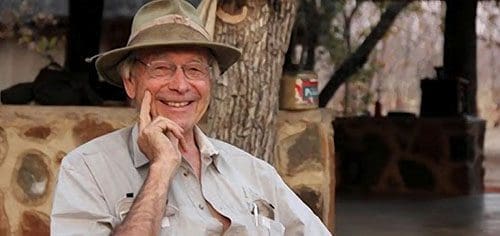
In the 1960’s, Allan Savory made a breakthrough in understanding the cause of the desertification of the world’s grassland ecosystems. Today, holistic land management and regenerative agriculture practices are seen as key to the health of our planet. Here, the International Wool Textile Organisation explains the vital role of the world’s sheep population.
The Urgent Problem of Desertification
Desertification is diminishing the world’s arable land at an alarming rate. For years, people blamed the overstocking of grasslands as the main culprit. This led to the needless culling of millions of heads of livestock, as well as the practice of burning dead grass to ensure renewed growth. After years of observation and hands-on practice, Allan Savory understood that culling and burning is unnecessary, and even make the situation worse.
The science points instead to a simple, counterintuitive solution.
Read Next: Using Wool in Interiors, Featuring Neutex
Understanding Overgrazing
“Overgrazing of plants has nothing to do with animal numbers,” Savory says. “It has got everything to do with how many days the plant is exposed to grazing and how many days it gets to recover before it is grazed again.
“Whether there is one sheep or a million sheep, makes no difference, except to the number of plants overgrazed. The fewer the sheep, the more the over-rest and the more plants kill themselves from resting. So this concept of stocking rate … that all governments believe in, has no basis in science.”
What then, can be done to keep land healthy? “If we look at herds that move naturally through the grasslands,” says Savory, “we can see that this would have kept the grass cycling through dung and urine, which would have kept the soil covered, so that is what we need to do. And I put it to you now that, in fact, it is the only option.”
How Sheep Can Help
Savory proposes, essentially, that animals have been preserving grasslands naturally for centuries, merely by grazing, leaving their droppings and moving on. When farming and land management methods allow animals, like sheep, to do this, the health of grassland is restored and desertification reverses.
While all livestock, with freedom to roam over the available grazing land, can help to improve the land and prevent desertification, it is sheep in particular that hold the key to restored health. Much available grazing land has deteriorated to the extent that it can no longer sustain large livestock such as cattle. Many of these areas can, however, sustain sheep. If sheep are introduced to these grasslands and allowed to wander and graze, their feeding cycles will improve the quality of the land and the health of the soil and plants.
Learn All You Need to Know About the International Wool Industry
For more information on how sheep contribute to building a sustainable planet, as well as source information on the wool industry around the world, take a look at our fact sheets, statistics and guidelines.
Can Sheep Save the Planet? Yes! Says Allan Savory. Watch More Here: https://youtu.be/WUMQVqtjUAQ
